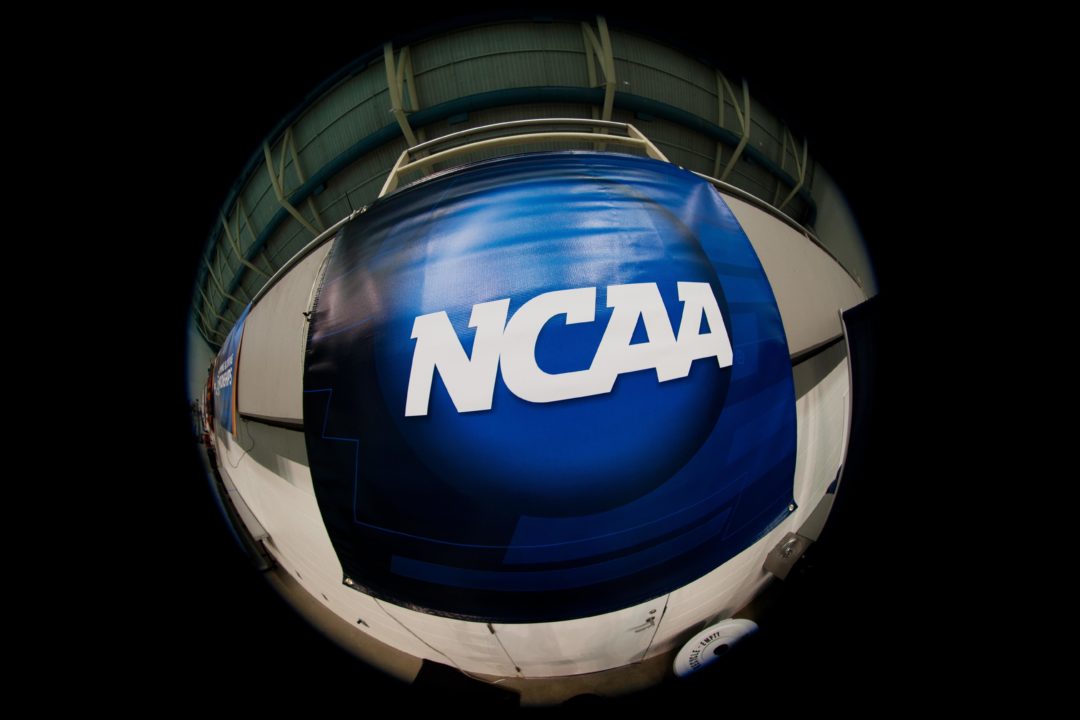The “Big 5” Athletic Conferences granted autonomy by the NCAA will meet this weekend to discuss and vote on proposals that could change the landscape of college athletics.
The 5 major conferences – ACC, Big Ten, Big 12, Pac-12 and SEC – were granted autonomy by the NCAA last summer, allowing them more freedom to govern themselves and create their own rules for college athletics. The move was a response to the growing criticism of the NCAA by those looking to procure more benefits, both financial and otherwise, for college athletes.
In that vein, the group of 80 representatives will include a voting representative from each of the 65 member schools, but also 15 student athletes, each of whom gets their own vote on the various proposals.
The student-athlete representatives are listed below, per a press release by the Big Ten Conference. No swimmers are included in the 15, but there are a number of non-revenue/Olympic sports represented:
Name Institution Sport
Patrick Andrews Clemson Baseball
Kaila Barber Notre Dame Track and Field
Ty Darlington Oklahoma Football
Diamond DeShields Tennessee Women’s Basketball
Ben-Marvin Egel Purdue Men’s Golf
McKenzie Fechter Washington Women’s Gymnastics
Chris Hawthorne Minnesota Football
Jay Hughes Mississippi State Football
Taylor James California Women’s Rowing
Anthony Lyons, Jr. Texas Tech Baseball
Nandi Mehta Northwestern Women’s Soccer
Kene Orjioke UCLA Football
Artie Rowell Pittsburgh Football
Maddie Stein Kansas Softball
Josh Tobias Florida Baseball
The Big Ten press release indicates that the group will meet twice on Saturday, January 17 at the NCAA Convention. Between the two meetings, they’ll vote on 8 proposals and 1 resolution, described by the conference as focusing on “the issues of cost of attendance, loss-of-value insurance, scholarship renewal, and concussion safety.”
In order to pass, the proposals will need either:
- 60% of all votes, plus votes from a majority of schools in 3 of the 5 conferences
or
- 50% of all votes, plus votes from a majority of schools in 4 of the 5 conferences
Possibly the biggest eventual outcome of autonomy could be the paying of college athletes, especially in revenue-producing sports like football and basketball, where critics say scholarships alone don’t fairly compensate athletes for the huge amount of revenue they produce for their schools and the NCAA.
The effect of all of this on swimming is still up in the air, as many of the possible benefits (4-year guaranteed scholarships, improved athlete heath insurance) would help college swimmers, but many fear that allowing payment of football and basketball players would cause schools to cut Olympic sports like swimming to trim their budgets.

Allowing the athletes to make income from outside activities, if reported and monitored, avoids adversely impacting school revenues and thus avoids the adverse impact on non-revenue sports like swimming. Simple allowing payments increases the risk that the weaker (i.e. lower gross revenue) schools will cut non-revenue sports. The earned income could be perhaps be capped – at say $25,000 per year, and teams could be allowed to earn as groups – i.e. Jamis Winston or Marcus Mariota could, instead of signing 100 autographs at $1,000 apiece, participate in a “autographs by the whole team session” that generate enough cash to give every teamate $25,000 per year.
I don’t know what this means for the non-revenue sports in the “Big 5” Conferences but I do believe that change in the revenue sports – men’s basketball & football – in those Conferences is inevitable.
The money is so big now and everybody’s making it except for the athletes that provide the product. That kind of business model is not sustainable. EPSN’s deal for the football championships pays the NCAA something north of $7 billion(!) over 12 years. It’s criminal that some of that money is not paid to the athletes.
While in theory I support the athletes being paid a reasonable salary… I worry that it will negatively impact the non Football/Basketball sports… if there is a solution that shares the wealth across all sports I can get behind it- but that is unlikely to happen… most likely Football/Basketball trump all.
Hulk Swim – this is my dilemma exactly. In the interest of fairness, I believe revenue-producing athletes must be compensated more, but I think the impact on Olympic sports would be profound and dangerous. My best “middle-ground” solution would be to drop the NCAA’s amateurism requirements and allow athletes to make money off of their own names and images. That would allow players to sign endorsement deals while still in college, and it would allow a swimmer, for example, to offer private lessons or swim clinics using their name and status as an elite swimmer to advertise.
It might be too costly for schools to directly pay their athletes, but in my opinion, there’s no reason the NCAA should prevent… Read more »
I can get behind that Jared… but in that scenario where they are only making money outside the NCAA on their name… the Big 5 would need to pony up and guarantee scholarships across the board and provide solid health care and other benefits like meal plans…
So a ‘Jared Anderson’ would get health care ND a guaranteed 4 year scholarship and a realistic meal plan for an athlete.
And if ‘Jared’ were to write articles for some newspaper or magazine he could get compensated…
Whereas a ‘Mel Stewart’ would get the same as ‘Jared’ except being a superstar National Team Member could also sign with and agent and do some suit deals and modeling and speaking and clinics…
I think that makes sense. And taking care of needs like that would hopefully benefit all sports more equally, which would be a major positive.